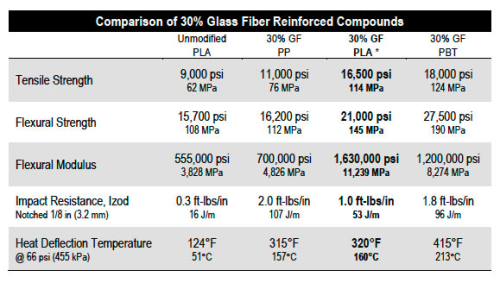
PLA bio-polymers are a sustainable alternative to traditional hydrocarbon-based thermoplastics such as polyesters, polyolefins and high-impact polystyrene. However, unmodified PLA suffers from performance limitations in terms of mechanical and thermal properties, reports RTP.
"Our new glass fibre reinforced PLA compounds enhance the strength and temperature performance of PLA making it possible for PLA to be considered for much broader use," says Will Taber, Business Manager for Emerging Technologies at Winona, Minnesota, USA, headquartered RTP Company.
Available globally, RTP Company's reinforced PLA grades have glass fibre loadings of 10-40%. The glass level can be customised to meet the specific requirements of individual applications in appliance, automotive, consumer goods, electrical & electronics, and construction markets.
"RTP Company can now produce PLA bioplastic compounds with mechanical properties that meet or exceed those of many traditional thermoplastics," says Taber.
RTP Company's Eco Solutions portfolio includes compounds that make use of bio-based or recycled resins, natural fibers, and halogen-free flame retardant or wear resistant additives.





